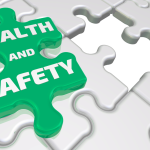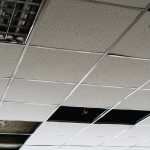Introduction:
In recent years, there have been changes to the Fire Safety Order in the UK, which affects the fire safety requirements for non-domestic buildings. These changes were brought about by the Building Safety Act 2022. If you are a responsible person for a building, it is important to understand what these new requirements entail. In this blog post, we will break down the key points in simpler terms to help you grasp the significance of these changes.
Which buildings are affected?
The new fire safety requirements apply to all non-domestic buildings where people work, visit, or stay. This includes workplaces, communal areas in multi-occupied residential buildings (e.g., corridors, stairways), and similar premises. However, these requirements do not apply to individual domestic premises.
Enforcing bodies and background:
The local fire and rescue authorities remain the primary enforcers of the Fire Safety Order, including the new requirements. The Housing Act 2004 also empowers the local authority to enforce fire safety regulations in the non-domestic parts of multi-occupied residential buildings. Depending on the specific circumstances, other enforcing bodies like the Health and Safety Executive, Defence Fire Safety Regulator, or Crown Premises Fire Safety Inspectorate may be responsible.
Key changes introduced by the Building Safety Act 2022: The Building Safety Act 2022 has amended the Fire Safety Order in several ways. Here are the important changes you need to be aware of:
- Record-keeping: Responsible persons must now maintain a comprehensive record of their fire risk assessment, including all findings. They should also record the name and organization of the individual who conducted or reviewed the assessment.
- Fire safety arrangements: Responsible persons must document how fire safety is managed in their premises.
- Contact information: Responsible persons need to provide their contact information, including a UK address, and share it with other responsible persons and residents of multi-occupied residential premises where applicable.
- Cooperation between responsible persons: Responsible persons should take practical steps to identify other responsible persons sharing duties for the same premises. They must exchange contact information and clarify their responsibilities to ensure a cohesive approach to fire safety.
- Sharing information: Departing responsible persons must share all relevant fire safety information with incoming responsible persons. This includes the fire risk assessment, information about who conducted the assessment, and contact details of the responsible person or their representative.
- Responsibilities for buildings with multiple domestic premises: If a building contains two or more sets of domestic premises, responsible persons must provide residents with relevant fire safety information in an easily understandable format. This ensures that residents are aware of the risks, safety measures, and whom to contact in case of concerns or emergencies.
- Increased fines: The Building Safety Act has increased the fines for certain offenses related to fire safety, such as intentionally impersonating a fire inspector or failing to comply with specific requirements.
- Strengthened status of guidance: The guidance issued under Article 50 of the Fire Safety Order now holds stronger significance in court proceedings, helping determine whether a breach of the Fire Safety Order has occurred.
Conclusion:
Understanding the new fire safety requirements is crucial for responsible persons in non-domestic buildings. By following the amended Fire Safety Order, including the changes introduced by the Building Safety Act 2022, responsible persons can ensure the safety of occupants and comply with the law. It is important to keep records, cooperate with other responsible persons, provide information to residents, and stay updated with the guidance. By doing so, we can collectively enhance fire safety in our buildings and protect lives.
Contact OJ Health and Safety Solutions
We offer full fire risk assessments to ensure compliance with the latest fire safety changes. Contact us either on 01924 261789 or email admin@ojsafety.co.uk.











